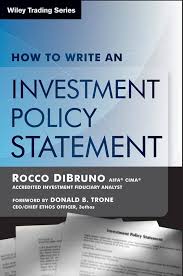There’s never a shortage of new retirement plan fee and investment performance cases. The problem for plan sponsors is that even if you’re doing everything right, you can’t ever be completely sure you won’t be sued. That’s just the reality of today’s litigation environment.
A recent case, Macias v. Sisters of Charity of Leavenworth Health System, drives home one of the most basic lessons that retirement plan attorneys (myself included) harp on all the time: if you put something in writing, you need to follow it, and document that you followed it.
The Case at Hand
In Macias, the plan sponsor, its board, and the retirement investment committee were sued over alleged failures in monitoring investments. The defendants tried to get the case dismissed early, arguing that the plaintiffs hadn’t even stated a valid claim. The court didn’t agree.
Why? Because the plaintiffs alleged that the defendants had an Investment Policy Statement (IPS) that required them to evaluate plan investment performance annually against certain benchmarks, and that they failed to do so. The court found that was enough to plausibly allege a breach of fiduciary duty.
Now, maybe the defendants did the evaluations. Maybe they didn’t. Maybe they’ll eventually win at trial. But the point is that because there’s an allegation they didn’t follow their own IPS, they couldn’t knock the case out early. That means discovery, legal fees, and possibly a settlement just to avoid bleeding money in litigation.
Process Over Results
This case highlights a theme that comes up time and again in ERISA litigation: process matters more than results. Courts know markets are unpredictable and investment performance will fluctuate. What they focus on is whether fiduciaries had a prudent process for monitoring investments, following their own rules, and documenting their actions.
An imprudent process, or even the appearance of one, is a much bigger legal risk than a bad quarter in a mutual fund.
The Role of the IPS
Here’s the irony: a retirement plan isn’t legally required to have an IPS. But having one is considered best practice. It sets the framework for how investment decisions will be made and how advisors’ performance will be measured. It provides structure and consistency.
The catch is that once you have an IPS, it’s not just a nice piece of paper. It’s a commitment. If the IPS says you’ll review performance annually, you need to do it annually. If it says you’ll benchmark against certain indices, you need to use those indices. And you need to write down that you did it.
Otherwise, the IPS becomes Exhibit A in the plaintiffs’ complaint.
Practical Takeaways for Plan Sponsors
1. Review the IPS regularly – Dust it off at least once a year to make sure it still matches your practices and expectations.
2. Follow the IPS to the letter – If it says you’ll do something, do it. Don’t improvise.
3. Document everything – Meeting minutes, memos, consultant reports—if it’s not documented, it might as well not have happened in the eyes of a court.
4. Align with your advisors – Make sure your investment advisors are on the same page. They’ll want clarity on how their performance will be judged, and you’ll want their help keeping the IPS current.
The Bottom Line
Even perfect process and airtight documentation won’t guarantee you won’t get sued. Plaintiffs’ firms are filing these cases in bulk, especially when fees are involved. But if you’ve got your IPS, you’re following it, and you’re documenting it, you’re putting yourself in the best possible position to defend the plan.
Skipping those steps? That’s like putting a “Sue Me” sign on your retirement plan.







